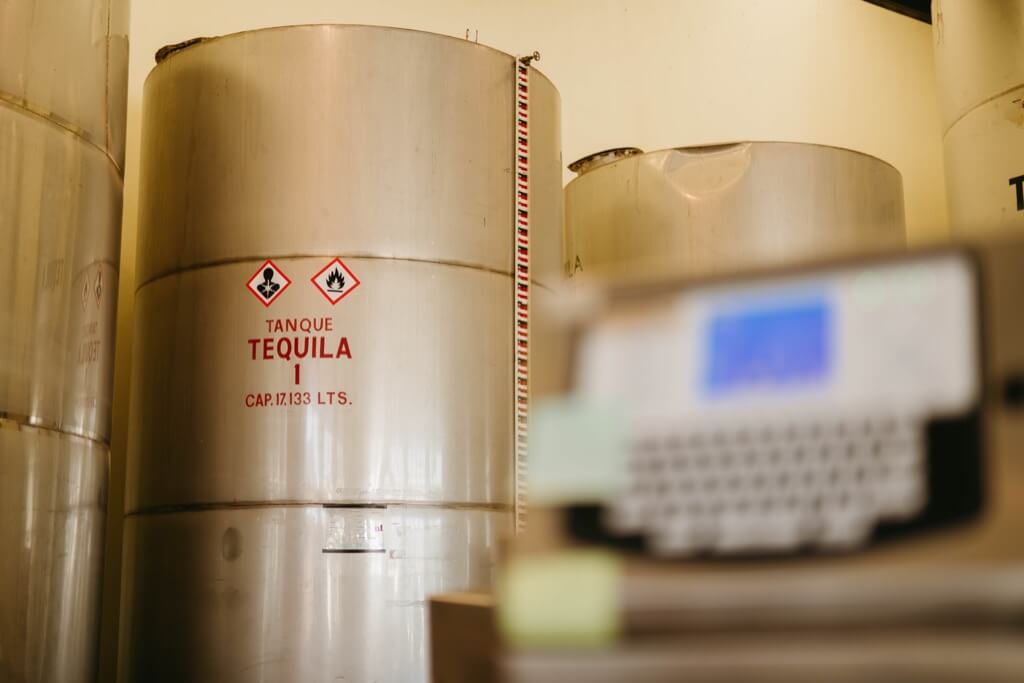In tequila production, the process of filtration stands out as a pivotal step that profoundly influences the final character of this beloved spirit. This exploration article will shed light on the good, the bad, and the sometimes cloudy aspects of tequila filtration, offering you a comprehensive perspective on how this process shapes your favorite drink.
Filtration in tequila production is akin to the art of finessing a masterpiece. It’s the distiller’s tool to refine, clarify, and perfect the spirit before it reaches your glass. The primary goal is to remove impurities and unwanted particles, ensuring the tequila not only looks appealing but also meets the high standards of taste and aroma cherished by aficionados. The “good” side of tequila filtration, characterized by techniques such as paper, activated carbon, or cellulose filtering, reveals a meticulous endeavor to purify while preserving the tequila’s core flavor.
The Good
Removing Impurities and Enhancing Clarity
The primary advantage of filtration is its ability to remove unwanted impurities that can cloud the appearance and taste of tequila. These impurities, often remnants of the distillation process, can include organic compounds and particulates that, if left unfiltered, detract from the overall sensory experience. Techniques such as paper and cellulose filtration work by trapping these particles, resulting in a tequila that is not only visually appealing with its crystal-clear appearance but also purer in taste. This clarity is not merely aesthetic; it’s a hallmark of quality and care in production.
Improving Texture Without Altering Character
One of the filtration’s most nuanced benefits is its ability to enhance the texture of tequila, making it smoother on the palate without significantly altering its fundamental character. Activated carbon, known for its porosity and adsorption capabilities, plays a pivotal role here. It can selectively remove harsher compounds that contribute to an unpleasant alcohol burn, smoothing out the drink without stripping away the flavors and aromas that define the spirit’s identity. This delicate balance ensures that the tequila retains its depth and complexity, offering a more enjoyable sipping experience.
Tailoring Flavor Profiles to Consumer Preferences
Filtration empowers distillers to fine-tune the flavor profile of their tequila, catering to a broad spectrum of consumer preferences. Whether the goal is to reduce the alcohol burn for a smoother finish or to subtly adjust the flavor nuances, filtration techniques can be adjusted to achieve the desired outcome. This versatility is especially valuable in an industry where tastes can vary widely, allowing producers to create a range of products from the same base spirit. As a result, consumers can enjoy tequilas that range from bold and robust to soft and subtle, each with its unique character shaped by the filtration process.
The rise of Cristalino tequila exemplifies the innovative potential of filtration in the tequila industry. By filtering aged tequilas until they achieve a clear, blanco-like appearance, distillers are challenging traditional perceptions and introducing a new category that blends the complexity of aged spirits with the crisp, clean aesthetic of unaged blanco tequilas. To remove the color that barrel aging imparts while preserving the complex flavors and silky texture developed during maturation, this process—which frequently involves activated carbon—requires a careful balance. Cristalinos has quickly gained popularity, offering a unique experience that bridges the gap between different tequila styles and showcases the creative possibilities of filtration.
While filtration is undeniably beneficial in many respects, it’s a double-edged sword that, without careful consideration, can undermine the very qualities that make tequila a rich, multifaceted drink.
The Bad
- Stripping of Essential Oils: The use of activated carbon and other aggressive filtration methods can remove not just impurities but also essential oils and compounds that contribute to the tequila’s flavor profile and aroma.
- Dilution of Character: In the pursuit of smoothness, distillers risk diluting the unique characteristics that define each tequila, turning a spirit known for its robust and diverse flavor spectrum into a more homogenous and less interesting product.
- Diminished Depth: Excessive filtration can flatten the tequila’s complexity, making it harder to distinguish between different brands or expressions based on taste alone.
- Loss of Terroir: One of tequila’s most celebrated attributes is its ability to convey the terroir of the agave from which it was made. Over-filtration can obscure these subtle but crucial nuances, disconnecting the spirit from its geographic and cultural roots.
- Enhancement vs. Diminishment: Distillers face the challenge of enhancing the tequila’s best qualities without crossing the threshold into diminishment. Finding the optimal level of filtration requires expertise, experience, and sometimes, a willingness to embrace a bit of cloudiness as a sign of character.
- Consumer Expectations: Educating consumers about the natural variations in tequila and the reasons behind them (including why some tequilas are clearer than others and what a slight cloudiness might indicate) is crucial. There’s a balance to be struck between meeting market demand for clear, smooth spirits and preserving the authenticity and complexity of traditional tequila.
- Technique Selection: Choosing the right filtration technique for the desired outcome, whether it’s cellulose filters for a lighter touch or activated carbon for deeper purification, requires a nuanced understanding of how each method impacts the final product.
- Trial and Error: Developing a filtration process that respects the tequila’s integrity while achieving the desired clarity and smoothness often involves a lot of experimentation. Distillers must be willing to invest time and resources into getting it right.
The Cloudy

The sometimes cloudy appearance of tequila can stir curiosity and concern among consumers unfamiliar with the nuances of its production. This cloudiness, often a result of minimal processing, serves as a testament to the spirit’s authenticity and the preservation of its natural character. It’s a hallmark of an artisanal product that has been distilled with care, retaining the essential oils and compounds that contribute to its rich flavor profile and aroma. Educating consumers about this aspect is crucial; it helps in shifting perceptions from viewing cloudiness as a flaw to recognizing it as a sign of quality and traditional craftsmanship.
Filtration Techniques
Distilleries employ various filtration techniques to balance the removal of undesirable particles with the preservation of tequila’s inherent flavors. Cellulose filtering and gravity-based methods are among the approaches that aim for a gentler filtration process. These methods are designed to filter out particulates that could contribute to cloudiness while minimally impacting the spirit’s taste and aroma. Such techniques underscore the distiller’s commitment to maintaining the essence of tequila, allowing the spirit to retain its depth and complexity even as it undergoes purification.
Regional Tastes and Filtration Choices
Taste preferences and expectations for tequila can vary widely from one region to another, influencing distillers’ approaches to filtration. In areas where consumers value clarity and smoothness, distilleries might opt for more rigorous filtration methods. Conversely, in regions where the authenticity and robustness of flavor are prized, producers may choose less invasive filtration techniques, accepting a certain degree of cloudiness as part of the spirit’s character. This variation underscores the importance of understanding and catering to the diverse palate preferences of different markets.
Tequileño’s Filtration Experiment
Tequileño’s exploration into the effects of cellulose filtration provides a practical example of how even minimal filtration can alter tequila’s taste. After observing particulate formation in their tequila in colder climates, they experimented with varying degrees of cellulose filtration. This hands-on trial aimed to address consumer feedback without compromising the spirit’s integrity. The experiment revealed that all levels of filtration, from minimal to extensive, impacted the tequila’s flavor profile, leading to the decision to maintain their traditional process. This outcome highlights the delicate balance between achieving clarity and preserving the unique taste of tequila.
Questions & Answers
Can I safely freeze my tequila?
What do we think? No. The tequila’s natural fatty acids may separate if you do this. These enhance the tequila’s aroma and flavor. Having the pros handle the cold filtration is the way to go, in our opinion. But that’s your tequila, so enjoy it as you choose!
Is that tequila hazy or does it have particles in it? How does it sound now?
Yes, usually. The particles or cloudiness should diminish if you shake the container while it is at room temperature. This will allow the fatty acids to be reabsorbed into the liquid. Typically, copper from the still will be visible as blue particles floating on top. We simply carefully pour it out of the bottle and keep sipping what’s left when we observe this happen.

